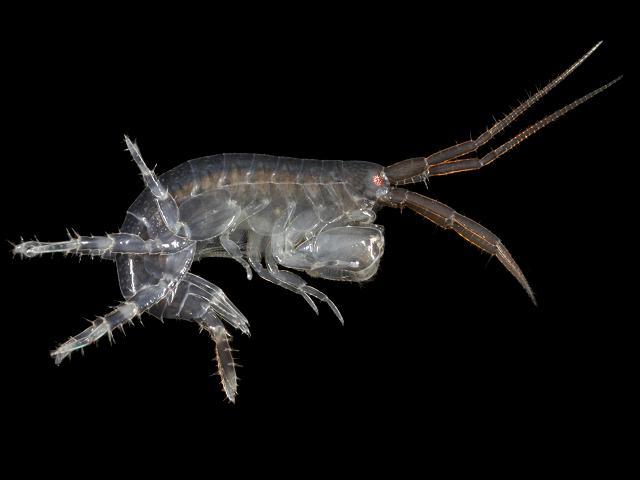
APHOTOMARINE
An educational resource dedicated mainly to the photography
and diversity of marine life that can be found in coastal waters
and intertidal areas of Great Britain and Ireland by David Fenwick.

Melita hergensis Reid, 1939 - A melitid amphipod (Amphipod images)
Scroll down and rollover titles to change screen image or click on title to view image.
Melitid amphipod
Melita hergensis
- lateral view 1
Melita hergensis
- lateral view 1
Melitid amphipod
Melita hergensis
- lateral view 2
Melitid amphipod
Melita hergensis
- lateral view 3
Melitid amphipod
Melita hergensis
- lateral view anterior 1
Melitid amphipod
Melita hergensis
- lateral view posterior 1
Melitid amphipod
Melita hergensis
- head under microscope 1
Melitid amphipod
Melita hergensis
- head under microscope 2
Melitid amphipod
Melita hergensis
- gnathopod 2 -1
Melitid amphipod
Melita hergensis
- Urosome
segment 1 with single dorsal tooth 1
Specimens above were found on washing the holdfasts of Saccorhiza polyschides, Furbelows, which were collected subtidally at Chimney Rocks, Penzance, Cornwall, 25.09.18.
Melitid amphipod
Melita hergensis
- lateral view on rock 1
Melitid amphipod
Melita hergensis
- lateral view on rock 2
Melitid amphipod
Melita hergensis
- lateral view on rock 3
Specimen above was found under a rock on the lowershore at Battery Rocks, Penzance, Cornwall. 23.07.13.
Melitid amphipod
Melita hergensis
- from washing small stones 1
Melitid amphipod
Melita hergensis
- from washing small stones 2
Melitid amphipod
Melita hergensis
-from washing small stones 3
Specimens above are mostly Melita hergensis, specimens found under pebbles and stones on the lowershore at Battery Rocks, Penzance, Cornwall. 01.09.20. The sample of washed stones contained Melita hergensis, Melita palmata and a few Gammarella fucicola.
This species can be told from Melita palmata as the species does not have a cleft between the lateral lobe and postantennal angle on its head.

The main objective of this website is in furthering environmental awareness and education through the medium of photography. To increase awareness and access to the wildlife of the region and help
people find and identify it. Sometimes the difference between species is obvious but many species can only be determined by observing microscopic characteristics that are specific to any one species.